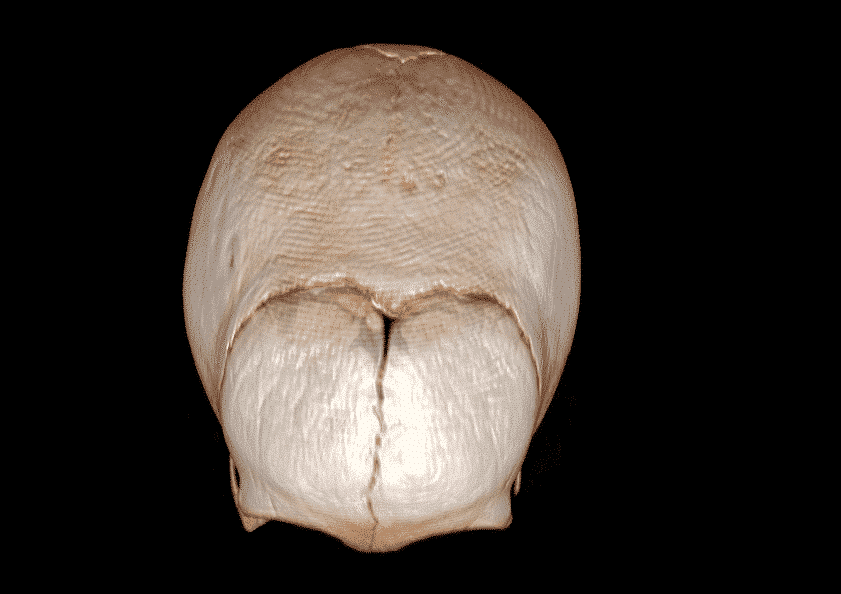
Craniosynostosis: a Case Report
2Radiology, Malaga Regional University Hospital, Malaga, Spain
Background: Craniosynostosis is premature fusion of one or more of the cranial sutures, with a incidence of 1 in 2000-3000 live births. It includes a wide spectrum of cranial malformations, from closing of an isolated suture to the closing of several sutures, or associated to other malformations, constituting syndromic craniosynostosis. Within the context of primary craniosynostosis, sagittal craniosynostosis is the most common and know form (scaphocephaly).
Objective: We report on a case of scaphocephaly managed expectantly due to aesthetic alteration without functional repercussion.
Methods: Case report
Results: A 3-month-old female infant consulted in primary care due to cranial deformity. Physical examination shows good general condition, well nourished and highlights cranial deformity with the appearance of scaphocephaly. Her head circumference was above 80 percentile for her age. There were no apparent facial deformities and age appropriate developmental milestones were achieved. Her birth history included an uneventful spontaneous vaginal delivery at 39 weeks, her natal weight was 3.4kg and there was an hospital admission at one month of life due to fever and marginal erythema with normal infectious study. The patient underwent thin slice high resolution cranial CT examination using multi-slice CT scanning and reconstruction images were obtained for 3 dimensional analysis. The scan revealed premature fusion of sagittal suture.The patient is now 8-month-old and is undergoing neurosurgery follow-up due to good neurological development and adequate cranial growth.
Conclusion: The pediatrician must distinguish the positional deformities or postural plagiocephaly, more frequent, of the craniosynostosis, which need sometimes surgical treatment and which precocious diagnosis improves the prediction. In some cases only causes minimal aesthetic defect and management may be conservative.

Powered by Eventact EMS